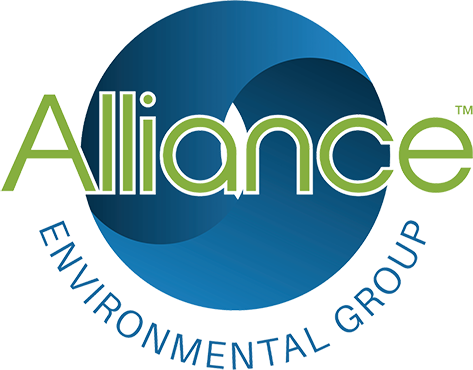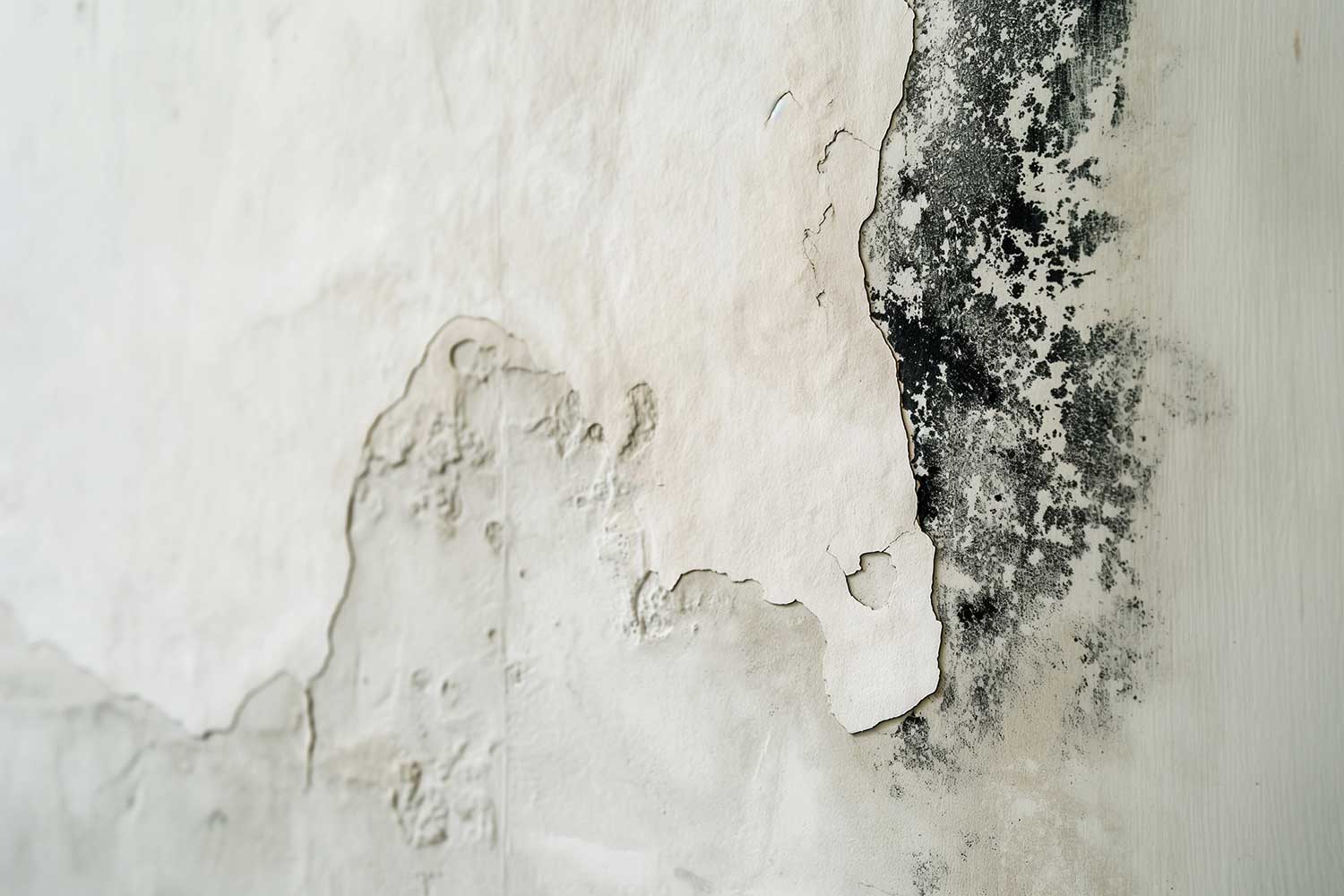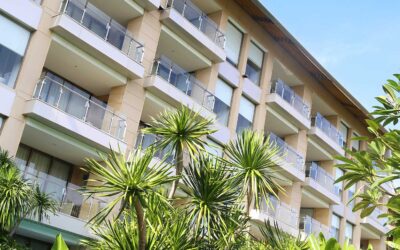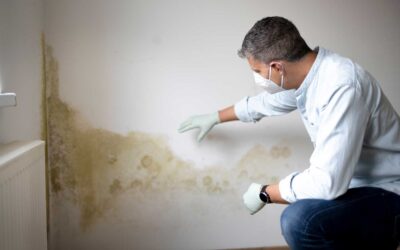The phone rings at 8 AM on a Tuesday. Your tenant’s voice carries that unmistakable edge of panic: “I think there’s mold in my bathroom wall.” In that instant, your day transforms from routine maintenance coordination to high-stakes crisis management.
You’re now navigating tenant health concerns, potential legal liability, property damage, and the complex web of California’s mold regulations – all while the clock ticks on documentation requirements and compliance deadlines.
For a Los Angeles property manager, mold isn’t just a maintenance issue; it’s a complex risk management challenge that requires a response as precise as a surgical procedure. A compliant remediation process is the only way to effectively remove the physical hazard while simultaneously neutralizing the legal and financial liability, ensuring the long-term health of both the tenants and the property’s value.
Commercial mold remediation in Los Angeles is the professional process of containing, removing, and preventing mold in properties in compliance with safety regulations. Think of it as a surgical procedure for your building; a precise, documented, and sterile process required to remove a threat completely. This creates the high-stress feeling of being pulled in multiple directions at once—facing anxious tenants, a cost-conscious owner, and complex regulations, all while the clock is ticking on potential property damage and legal exposure.
When you first suspect mold, your initial step should be to contact a certified specialist to assess the scope and contain the risk.
The “Surgical Procedure”: A 7-Step Compliant Mold Remediation Process for Los Angeles Properties
Los Angeles property managers require a methodical approach that transforms chaos into controlled, documented action. This process isn’t just about removing mold – it’s about creating an unassailable paper trail that protects you from future liability while ensuring tenant safety.
Step 1: Professional Assessment & Scope Definition
A certified mold inspector conducts air quality testing and visual inspection to determine the extent of contamination. This assessment creates the baseline documentation required for insurance claims and regulatory compliance. The inspector identifies the moisture source, maps affected areas and provides a detailed scope of work that becomes your roadmap for the entire process.
Step 2: Critical Containment & Negative Air Pressure
Before any mold removal begins, affected areas must be sealed with plastic sheeting to prevent cross-contamination. HEPA-filtered negative air machines create air pressure differentials that ensure mold spores don’t spread to uncontaminated areas. This step is where many DIY attempts fail catastrophically – improper containment can spread contamination throughout your property.
Step 3: Safe Removal of Contaminated Materials
Certified technicians wearing appropriate PPE remove contaminated drywall, insulation, carpeting, or other porous materials that cannot be effectively cleaned. All materials are double-bagged and disposed of according to EPA guidelines. This phase requires careful documentation of what materials were removed and their location for insurance and future reference.
Step 4: HEPA Vacuuming & Decontamination
All surfaces in the contaminated area undergo thorough HEPA vacuuming, followed by antimicrobial treatment of remaining structural elements. Non-porous surfaces like concrete, metal, and glass can typically be saved through proper decontamination procedures. This step transforms the affected area from contaminated to cleanable.
Step 5: Thorough Drying & Moisture Control
The underlying moisture problem must be completely resolved, or mold will return. This often involves repairing leaks, improving ventilation, or installing dehumidification systems. Professional-grade drying equipment reduces humidity levels to below 60% – the threshold where mold cannot thrive.
Step 6: Post-Remediation Clearance Testing (The Proof of Success)
An independent third-party inspector conducts air quality testing to verify that mold spore levels have returned to normal background levels. This clearance test is your legal shield – it provides documented proof that the remediation was successful and the space is safe for occupancy.
Step 7: Final Documentation for Your Records
You receive a complete remediation report including before-and-after photos, air test results, certificates of proper disposal, and warranty information. This documentation package protects you legally and provides the evidence insurance companies require for claims processing.
Managing the Human Element: Tenant Communication & Insurance
Under California Civil Code Section 1941.7, property owners must provide written notice when mold conditions exist. Here’s a framework that protects you legally while maintaining tenant relationships:
“Dear [Tenant Name], We have been made aware of a potential mold condition in your unit. Your safety is our top priority, and we are taking immediate action to address this issue professionally and thoroughly. We have engaged certified environmental specialists to assess and remediate the situation in full compliance with California regulations. We will keep you informed of our progress and expected timeline. Please contact us immediately if you have any health concerns or questions about this process.”
This communication demonstrates proactive responsibility while avoiding any statements that could be construed as admissions of liability or health advice.
Streamlining Your Insurance Claim: The Key Documentation You’ll Need
Most property insurance policies cover sudden and accidental water damage but exclude long-term maintenance issues like mold removal in Los Angeles. Your documentation strategy determines claim success:
- Initial assessment report establishing the moisture source
- Photographs showing the extent of damage before remediation
- Detailed remediation plan with itemized costs
- Proof of professional credentials for all contractors involved
- Post-remediation clearance certificate proving successful completion
Understanding Remediation Documentation
Documentation serves as your legal shield against future liability claims, insurance disputes, and regulatory compliance issues. Without proper documentation, even perfectly executed mold remediation in Los Angeles can leave you vulnerable to lawsuits claiming inadequate response or ongoing health hazards.
Many property managers assume that simply hiring a licensed contractor provides adequate protection. However, the specific types of documentation, chain of custody for testing, and third-party verification requirements are what transform a remediation from a maintenance activity into legally defensible risk management.
Properties with comprehensive remediation documentation can command full market value and avoid disclosure complications during sales. Conversely, properties with undocumented mold history often face value reductions and extended time on market due to buyer concerns about hidden problems.
What If…? Planning for A Tenant Dispute During Remediation
The scenario where tenants claim health impacts or demand relocation expenses during remediation is a legitimate concern that keeps property managers awake at night. Here’s your mitigation strategy:
- Prevention: Always provide written notice before remediation begins, including expected timeline and safety precautions being taken. Document all communications and maintain consistent messaging about your commitment to their safety.
- Response Protocol: If disputes arise, immediately involve your property management attorney and insurance carrier. Never make statements about health impacts or causation – these decisions require medical professionals. Focus communications on your commitment to following proper procedures and resolving the issue completely.
- Documentation: Maintain detailed records of all tenant communications, complaints, and your responses. This paper trail becomes critical if legal proceedings develop later.
Common Pitfalls to Avoid When Managing Commercial Mold Remediation
- Attempting DIY Assessment or Remediation: Property managers sometimes try to handle small mold problems internally to save costs. This approach virtually guarantees liability exposure because improper handling can spread contamination, create larger problems, and eliminate your legal defenses if tenants later claim health impacts.
- Choosing Contractors Based Solely on Price: The lowest-bid contractor often lacks proper certifications, insurance coverage, or documentation protocols. When problems arise, these contractors disappear, leaving you holding full liability for any mistakes or shortcuts in the remediation process.
- Inadequate Tenant Communication: Failing to properly notify tenants or providing vague, incomplete information creates distrust and increases the likelihood of legal challenges. Tenants who feel uninformed or surprised by remediation activities are more likely to assume you’re hiding the extent of the problem.
Business Impact
Compliant mold removal in Los Angeles transforms a potential catastrophe into a managed process that actually enhances your reputation as a professional property manager.
Documented successful remediation demonstrates proactive risk management to property owners, insurance companies, and future tenants. Properties with comprehensive remediation records maintain their value and avoid the stigma that follows undocumented mold problems.
A Question You Should Be Asking
- Question: “How do I prevent mold problems from recurring after remediation?”
- Why It Matters: Successful mold remediation in Los Angeles without addressing underlying moisture sources creates a false sense of security. Mold will return, often more aggressively, if humidity levels, ventilation problems, or building envelope issues remain unresolved.
- The Expert Answer: Post-remediation moisture control requires ongoing monitoring of humidity levels (keep below 60%), prompt attention to any new leaks or water intrusion, and potentially upgrading HVAC systems or building envelope components that contributed to the original problem. Consider implementing quarterly moisture inspections in previously affected areas.
From Crisis Contained to Professional Peace of Mind
What began as a stressful phone call about suspected mold transforms into a structured process that demonstrates your competency as a risk management professional. The methodical approach outlined here provides the documented proof that protects your interests while ensuring tenant safety. When you receive that final clearance certificate, you have more than just a cleaned space – you have the professional peace of mind that comes from knowing the issue is resolved completely and defensibly.
Looking ahead, mastering compliant mold remediation positions you for evolution into a regional portfolio manager role, where you’ll need to create scalable risk management protocols across multiple properties. The systematic approach you develop through handling these challenging situations becomes the foundation for the proactive maintenance and crisis management systems that successful regional managers depend on.
Ready to transform your next mold crisis into a managed, compliant process?
Contact Alliance Environmental Group for professional assessment and documentation that protects your interests while ensuring tenant safety.




